Boxley Performs on Porous Pedestrian Path
BY AsphaltPro Staff
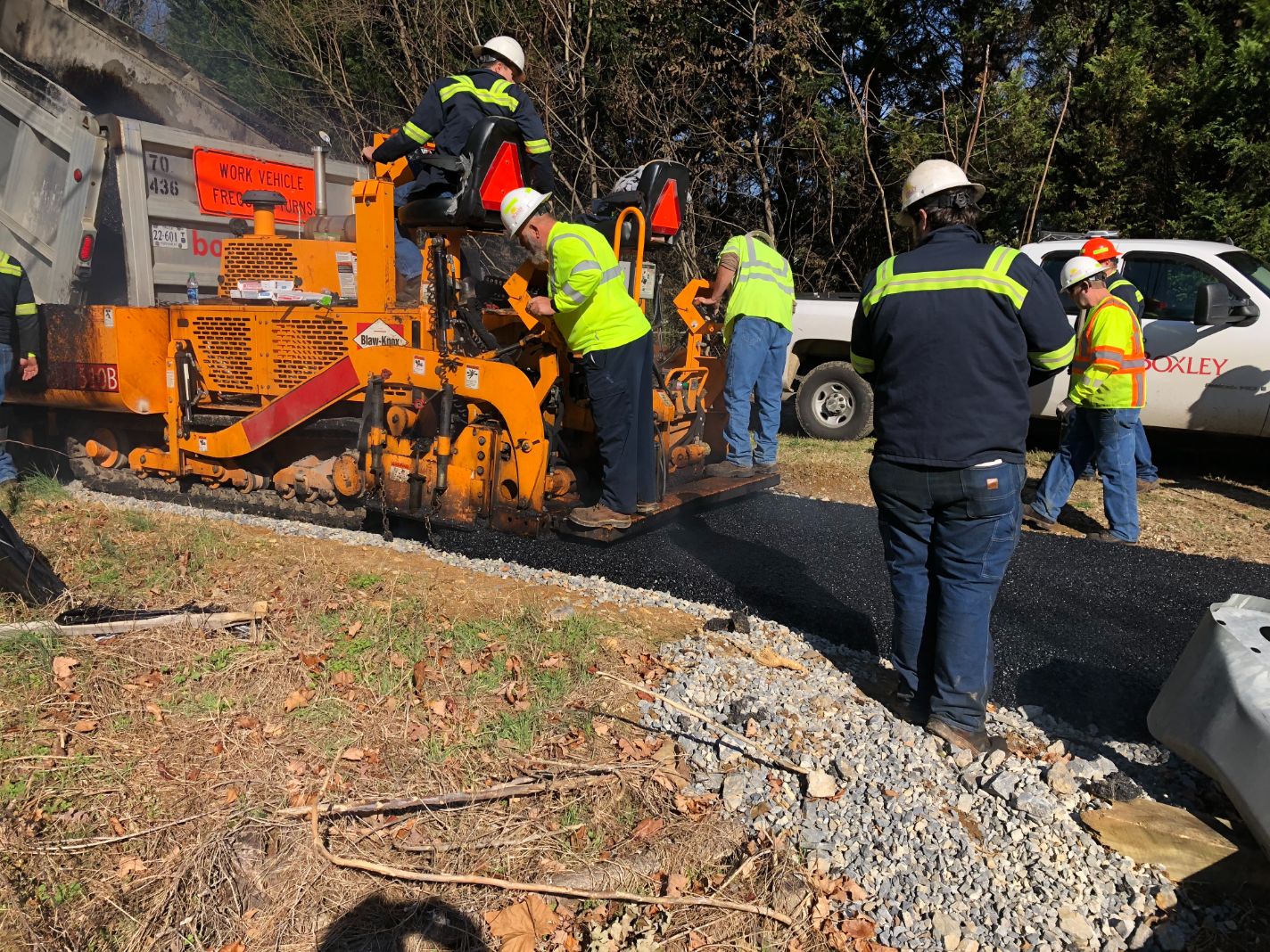
The Garden City Greenway is a two-mile multi use trail that winds through Roanoke, Virginia, along Garnand Branch Creek and Garden City Boulevard.
According to the Roanoke Valley-Alleghany Regional Commission, the Greenway aims to provide children a safe way to walk or bike to school and provides a pedestrian and biking route where there previously were none.
“One of the City of Roanoke’s missions is protecting the environment,” said James Nuckles, a civil engineer for the City of Roanoke’s Engineering Division who was involved in the project. According to Nuckles, the city had acquired some parcels in the area that had Federal Emergency Management Agency (FEMA) restrictions, including provisions of not increasing the impervious area on those parcels. “To extend the greenway in this area of Garden City, given the FEMA regulations, permeable pavement was the obvious choice.”
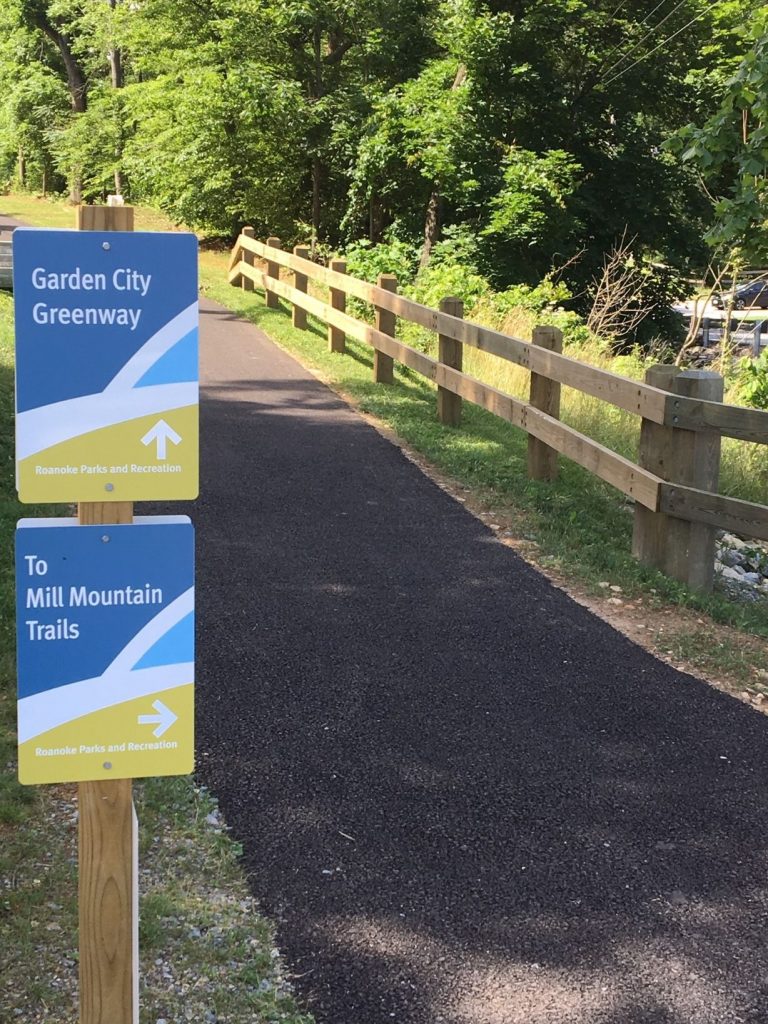
Boxley Materials paved 4500 feet of the Garden City Greenway path with porous asphalt in the fall of 2018.
Boxley Materials, Salem, Virginia, paved 4500 feet of the path with porous asphalt in the fall of 2018.
“Porous pavement is great for a walking and biking trail,” said Boxley Materials Director of Asphalt Plants and Development Ken Arthur. “You won’t have issues with standing water on the path, or problems with ice in the winter.”
Over the years, Boxley has performed half a dozen porous asphalt jobs in Virginia. However, the Garnand Branch Trail job presented its own unique challenges–starting at the plant.
Boxley recommended the city use a PAM19 mix design, which consists of 90 percent #68 stone and 10 percent #10 stone–both limestone products from Boxley’s Blue Ridge quarry–and 5.5 percent 64E-22 polymerized binder and 0.3 percent cellulose fiber.
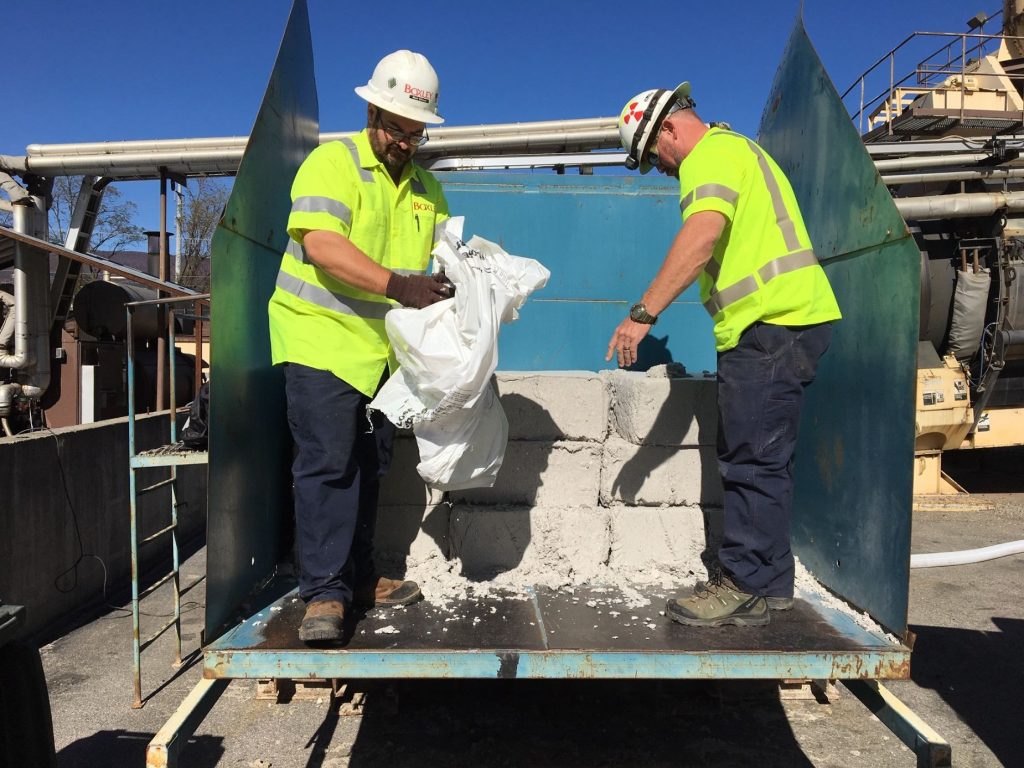
Boxley injected 0.3 percent cellulose fiber using a fiber feeder from Hi-Tech Asphalt Solutions. Fiber both maintains void structure for drainage and also limits drain-down.
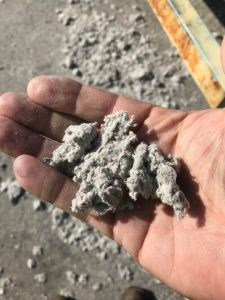
Boxley injected 0.3 percent cellulose fiber using a fiber feeder from Hi-Tech Asphalt Solutions. Fiber both maintains void structure for drainage and also limits drain-down.
“PAM19 has more voids, so we thought it would stay porous for a bit longer than a PAM 95, especially with the stiff binder and fibers,” Arthur said. “We thought that would give them the best long-term application.”
Due to the stiffness of the 64E-22 polymerized binder, equivalent to 76-22, the plant produced the mix at high temperatures of 340 degrees Fahrenheit. Boxley also injected 0.3 percent cellulose fiber using a fiber feeder from Hi-Tech Asphalt Solutions. Fiber both maintains void structure for drainage and also limits drain-down. Arthur continued, “fiber helps maximize asphalt film-thickness and make the end-product last longer.”
The mix was supplied by Boxley’s asphalt plant in Salem, an Astec double barrel drum plant capable of producing 300 tons per hour. In total, the project required just under 900 tons of asphalt.
“We’re a single-plant supplier in that market, so we don’t have a backup plant to lean one,” Arthur said. The plant can only accommodate three or four types of mix per day, and producing the porous asphalt added one more mix to the rotation during this project.
Also, because the trail was paved in 12 adjoining sections due to street crossings and intersections, the plant had to deal with numerous hot starts and stops.
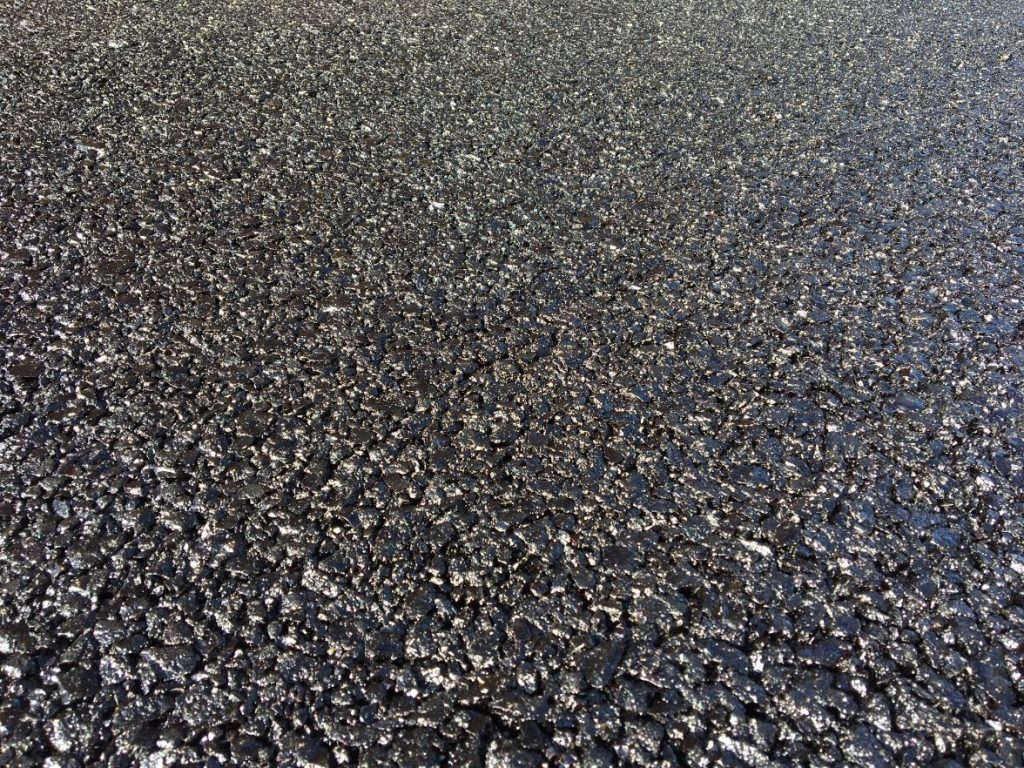
The job required a minimum of 16 percent air voids.
“We were concerned the stiff binder would harden up more quickly than conventional binder in our asphalt line and drums,” Arthur said. “We have three silos so storage was not an issue, however, we can still only produce one material at a time. If orders did not come in correctly, there may be an extended time that the crew would have to wait for the plant to switch back to the PAM. The job required us to have excellent communication between the field and the plant.”
Additionally, the field crew had its own challenges to overcome.
The general contractor on the job, DLB Enterprises LLC, Hillsboro, Virginia, performed the site prep work on the greenfield project and placed a stone reservoir of 12 inches of #2 stone and 2 inches of #57 stone with a Blaw Knox PF-1510 paver. To prevent cross contamination on the perimeter, which would affect the reservoir beneath, the sides were lined with a non-woven geotextile fabric.
When the Boxley crew began to pave a 3-inch lift of PAM19 over the reservoir, they had to take great care to ensure their equipment didn’t disturb the aggregate.
“Haul trucks backing up on that stone can really make a mess of the platform you’re paving on,” Arthur said. “The crew had to make sure to fix any displaced aggregate ahead of the paver.”
Boxley Field Operations Manager Travis Light came up with a clever idea to use a Roadtec SB2500 Shuttle Buggy for the portion of the project that ran along Garden City Boulevard. The shuttle buggy could dump the mix into the hopper from across the curb to mitigate the risk of displacing the stone reservoir. The crew was able to utilize this process for roughly half of the project.
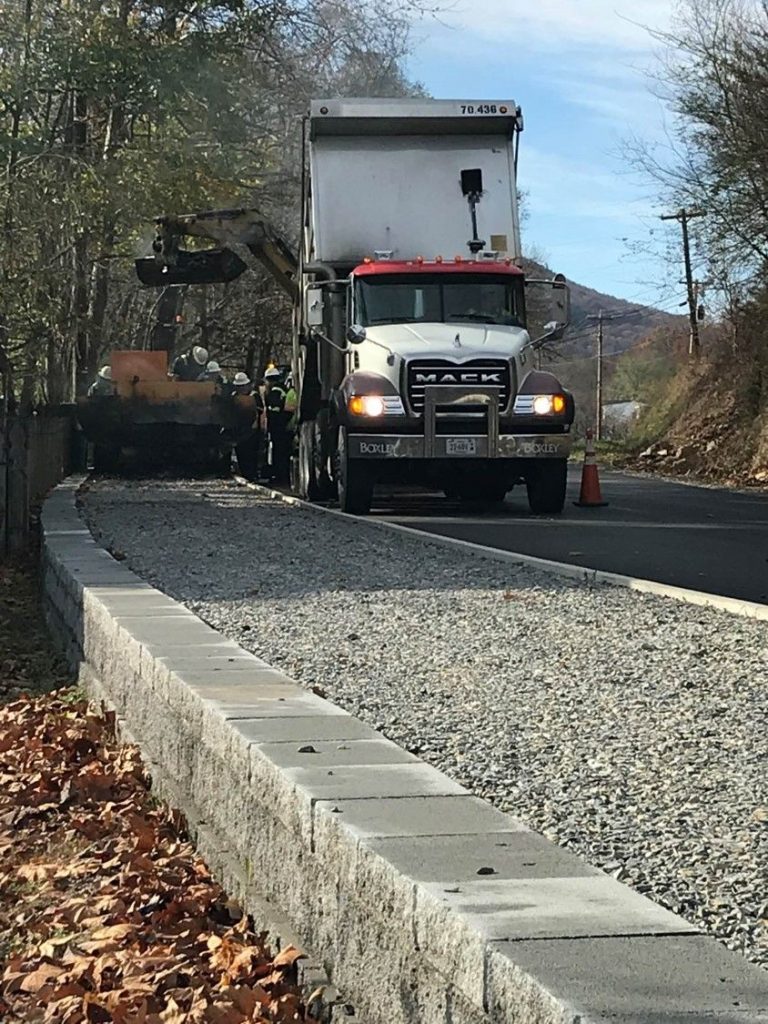
Boxley used a Roadtec SB2500 Shuttle Buggy to dump mix into the hopper from across the curb to mitigate the risk of displacing the stone reservoir.
“The rest of the trail was off the beaten path,” Light said. The majority of the trail trail was only 8 feet wide and often bounded by a retaining wall on one or both sides of the path. Due to these factors, mix was often transferred to skid steers, which delivered the mix to the Roadtec RP170 paver. “The skid steers gave us better maneuverability and were less likely to disturb the reservoir.”
The final challenge was compacting the porous pavement appropriately. The job required a minimum of 16 percent air voids, Arthur said.
“One of the most unique features of this project was the way we measured and tested field-density/voids,” said Quality Control Manager Andre Royal. “We simply poured a five gallon bucket of water on the mat in random spots throughout and made sure the water successfully went through. There was no ponding, as the water immediately went through the mix.”
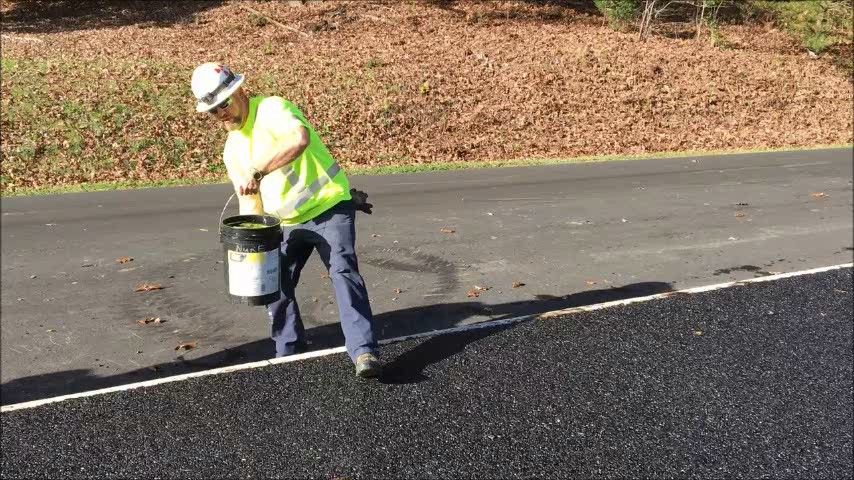
To test that the porous pavement is draining as it should, Boxley performs an informal test by pouring a 5-gallon bucket of water over the pavement. “If the water disappears, the pavement is doing what it’s supposed to do,” Arthur said.
“We had to brief our crew, especially our density personnel, about how compacting porous asphalt is a bit backwards from what we normally want,” he continued. “Here, you want to keep the air voids in there so it will drain for a long time to come.”
The crew used their Sakai SW330-1 and Ingersoll Rand DD70 rollers for a maximum of three passes. Due to the nature of compacting porous asphalt and the high production temperature required with such a stiff binder, the roller operators had to be very patient behind the paver. Despite paving on 50- and 60-degree days in November, Royal estimates they had to wait 30 minutes or more after the mix was laid to allow sufficient cooling, to 200 degrees Fahrenheit or less, to achieve the right level of compaction.
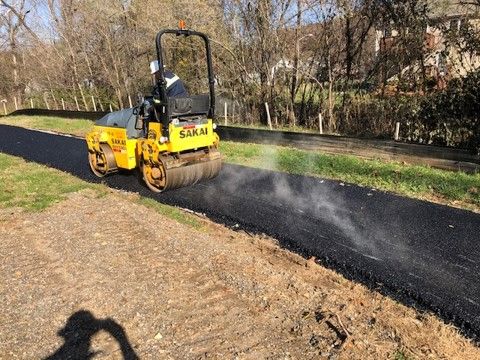
The crew used their Sakai SW330-1 and Ingersoll Rand DD70 rollers for a maximum of three passes. Due to the nature of compacting porous asphalt and the high production temperature required with such a stiff binder, the roller operators had to be very patient behind the paver.
“If anything, you don’t want to roll it too much,” Arthur said. “Just enough to seal it in place and get those marks out.” With such a distance between the paver and roller, Arthur said the crew also had to make sure no one walked on the mat before it had been compacted.
According to Light, the trail looks great and continues to be an asset to the community after nearly two years of service. “I imagine foot traffic picked up during COVID out of the pure necessity to get out of the house,” he said. “It’s a beautiful trail.”
